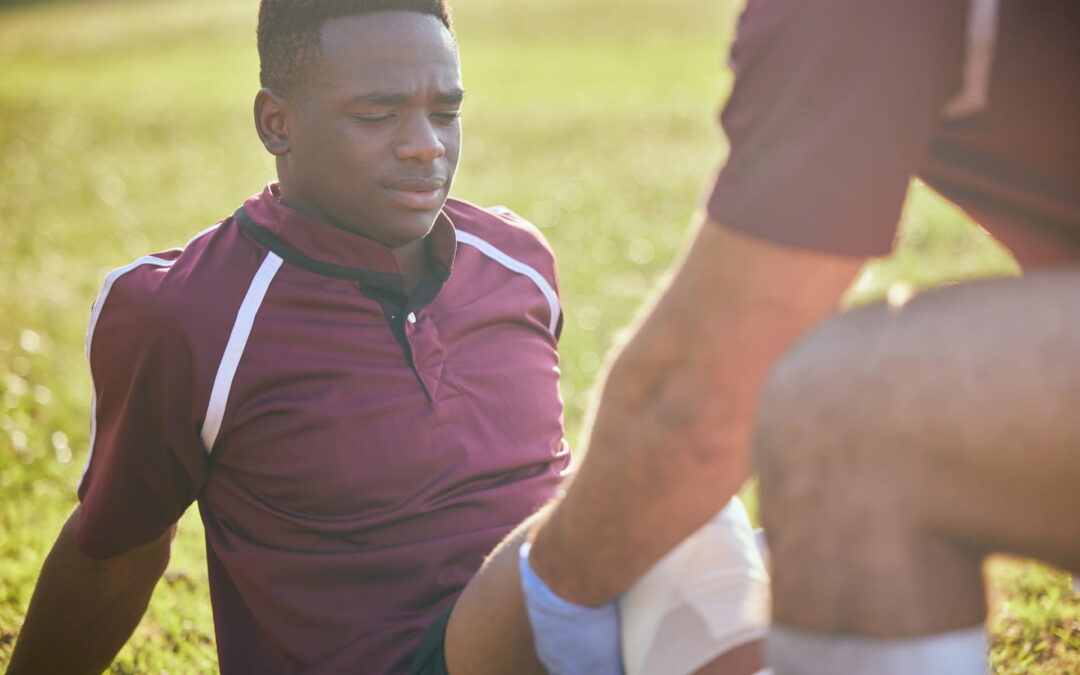Reducing sports injuries is a critical concern for coaches, athletes, and sports medicine professionals. The journey toward injury prevention is multifaceted, incorporating everything from warm-up routines to advanced technological interventions. This comprehensive guide aims to equip coaches with the knowledge and strategies to minimize the risk of injuries in their teams, underlining the pivotal role of sports medicine in achieving safer sports environments.
Understanding Sports Injuries
Injuries are an unfortunate reality in sports, ranging from minor sprains and strains to more severe injuries like fractures and concussions. The Types of Sports Injuries vary widely across different sports, highlighting the need for tailored prevention strategies. Research from the American Orthopedic Society for Sports Medicine outlines common injuries athletes face, emphasizing the importance of awareness and preventive measures.
The Causes of Sports Injuries are just as varied as the injuries themselves, often stemming from overuse, improper technique, or accidents during play. Understanding these causes is the first step in prevention, providing a foundation for effective injury reduction strategies.
Preventive Measures in Sports Medicine
Warm-up and Cool-down Techniques are foundational in preparing athletes’ bodies for the rigors of sport. Studies have shown that a proper warm-up can significantly reduce the risk of injury, making it an essential practice for all sports teams.
Equipping athletes with the Proper Equipment and Gear is another cornerstone of injury prevention. From helmets in football to shin guards in soccer, the right gear can be the difference between a safe play and a trip to the emergency room. The importance of this equipment cannot be overstated, as highlighted in research by the National Safety Council.
Sports Medicine and Physical Therapy offer invaluable resources for injury prevention and recovery. Sports medicine professionals specialize in treating and preventing sports-related injuries, using their expertise to keep athletes safe and healthy. Physical therapists play a crucial role in this process, designing rehabilitation programs that help injured athletes return to play safely.
Injury Prevention Strategies
Strength and Conditioning Programs are crucial for building the resilience of athletes. By focusing on the entire body, these programs enhance the strength, flexibility, and endurance necessary to withstand the demands of sport. The American College of Sports Medicine provides guidelines for these programs, emphasizing their importance in injury prevention.
Flexibility and Mobility Workouts contribute significantly to preventing injuries. Regular stretching and mobility exercises improve range of motion and reduce the risk of muscle strains and ligament sprains. The Mayo Clinic offers insights into the benefits of flexibility exercises for athletes, recommending them as a key component of any training regimen.
The role of Nutrition and Hydration in injury prevention is often underestimated. Proper nutrition fuels the body, supports recovery, and can even reduce the risk of certain types of injuries. Hydration is equally important, as dehydration can lead to muscle cramps and fatigue, increasing the risk of injury. The Academy of Nutrition and Dietetics provides guidelines on nutrition for athletes, highlighting the link between diet, hydration, and injury prevention.

Recovery and Rehabilitation
The Immediate Response to Sports Injuries can significantly affect the recovery process. Quick and appropriate first aid can prevent further injury and start the healing process off on the right foot. The American Red Cross offers training and resources on sports injury first aid, underscoring the importance of a knowledgeable response to injuries.
Sports Medicine Rehabilitation Techniques are essential for helping athletes recover fully and safely from injuries. These techniques range from physical therapy exercises to more advanced treatments like ultrasound therapy or laser treatment. The effectiveness of these rehabilitation methods is well-documented, with studies showing that a proper rehab program can greatly reduce the risk of re-injury.
The Mental Health and Injury Recovery connection is a critical aspect of rehabilitation that is often overlooked. The psychological impact of injury can be profound, affecting an athlete’s recovery and return to sport. Resources like the American Psychological Association offer guidance on supporting the mental health of injured athletes, highlighting the importance of addressing both physical and psychological recovery.
Advanced Technologies in Sports Medicine
The use of Wearable Technology for Injury Prevention is on the rise, offering new ways to monitor athletes and prevent injuries. Devices that track movement, heart rate, and other vital signs can help identify potential injury risks before they become serious problems.
Innovations in Treatment and Recovery are constantly evolving, with new technologies and treatment methods offering promising results. From regenerative medicine techniques like stem cell therapy to cutting-edge rehabilitation equipment, the field of sports medicine is always advancing.

Key Takeaways
- Injury prevention is crucial for the safety and success of athletes.
- Warm-up and cool-down routines, proper equipment, and sports medicine interventions are foundational to preventing injuries.
- Strength and conditioning, flexibility, and proper nutrition play significant roles in minimizing injury risk.
- Immediate response and effective rehabilitation are essential for recovery from sports injuries.
- Advanced technologies offer new opportunities for injury prevention and recovery.
Frequently Asked Questions
- What’s the most important step in preventing sports injuries? The most important step is a comprehensive approach that includes proper warm-up and cool-down routines, using appropriate sports gear, and adhering to strength and conditioning programs.
- Can proper nutrition really help prevent sports injuries? Yes, proper nutrition and hydration play a critical role in injury prevention, supporting overall health and reducing the risk of muscle cramps and fatigue.
- How does mental health affect injury recovery? Mental health significantly impacts recovery, as psychological well-being can influence motivation, pain perception, and the overall recovery process.
- Are wearable technologies effective in preventing sports injuries? Wearable technologies can provide valuable data on an athlete’s health and performance, potentially identifying risks and preventing injuries before they occur.
- What role does sports medicine play in injury prevention? Sports medicine professionals are crucial in preventing, diagnosing, and treating sports injuries, using their expertise to keep athletes healthy and safe.
This guide aims to provide coaches with the tools and knowledge necessary to reduce injuries among their athletes. By embracing the principles of sports medicine and implementing effective prevention strategies, coaches can create a safer environment for their teams, fostering both physical and psychological well-being.

